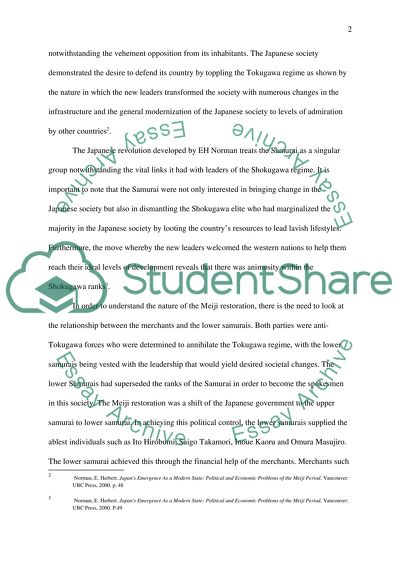Cite this document
(“Topical Analysis on Japan's Revolution Essay Example | Topics and Well Written Essays - 2250 words”, n.d.)
Topical Analysis on Japan's Revolution Essay Example | Topics and Well Written Essays - 2250 words. Retrieved from https://studentshare.org/history/1456236-topical-analysis-on-japan-s-revolution-critique-of
Topical Analysis on Japan's Revolution Essay Example | Topics and Well Written Essays - 2250 words. Retrieved from https://studentshare.org/history/1456236-topical-analysis-on-japan-s-revolution-critique-of
(Topical Analysis on Japan'S Revolution Essay Example | Topics and Well Written Essays - 2250 Words)
Topical Analysis on Japan'S Revolution Essay Example | Topics and Well Written Essays - 2250 Words. https://studentshare.org/history/1456236-topical-analysis-on-japan-s-revolution-critique-of.
Topical Analysis on Japan'S Revolution Essay Example | Topics and Well Written Essays - 2250 Words. https://studentshare.org/history/1456236-topical-analysis-on-japan-s-revolution-critique-of.
“Topical Analysis on Japan'S Revolution Essay Example | Topics and Well Written Essays - 2250 Words”, n.d. https://studentshare.org/history/1456236-topical-analysis-on-japan-s-revolution-critique-of.


